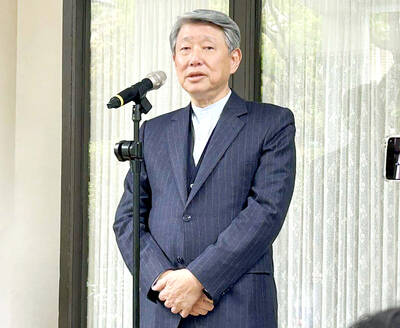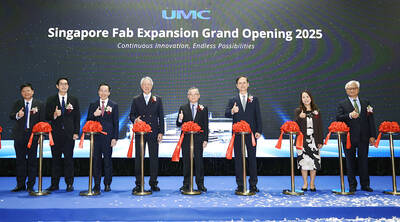The global mobile phone market grew 6.1 percent in the fourth quarter of last year, the lowest annual growth rate in the past two years, because of soft demand for feature phones, according to analysts at research firm International Data Corp (IDC).
Cellphone vendors shipped 427.4 million units in the fourth quarter of last year compared to 402.8 million units in the same period of 2010, as the feature phone market declined faster than anticipated, according to IDC.
The 6.1 percent year-on-year growth was higher than IDC’s forecast of 4.4 percent for the quarter, but weaker than the 9.3 percent growth in the third quarter of last year.
“The mobile phone market exhibited unusually low growth last quarter, which shows it is not immune to weaker macroeconomic conditions worldwide,” said Kevin Restivo, a senior research analyst at IDC.
“The introduction of high-growth products, such as the iPhone 4S, which shipped in the fourth quarter, bolstered smartphone growth,” Restivo said.
“Yet overall market growth fell to its lowest point since the third quarter of 2009, when the global economic recession was in full bloom,” Restivo added.
While smartphones continue to grow in popularity, feature phones still accounted for a majority of shipments from four of the five market leaders during the fourth quarter, because of lower prices and ease of use, the research firm said.
IDC said that Samsung Electronics Co, HTC Corp (宏達電) of Taiwan and LG Electronics Inc have dominated the Android smartphone market in the Asia-Pacific region, excluding China, while Windows Phones also gained some momentum in the region thanks to sales of the HTC Titan and the HTC Radar, as well as the Nokia Lumia series.
HTC also made important gains in the North American market with the launch of long-term evolution smartphones, along with similar models from LG, Motorola Mobility Holdings Inc and Samsung, the research firm said.
Among the top five vendors, Nokia Corp remained in first place with a 26.6 percent share during the fourth quarter, but the Finnish cellphone maker continued to lose ground to rivals as its new Lumia Windows Phones had captured fewer users than the company anticipated.
South Korea’s Samsung trailed closely, with a 22.8 percent market share, as it broke the 90 million unit mark for the first time in a single quarter, while Apple Inc jumped from fifth to the third spot with an 8.7 percent share globally, thanks to the wide availability of the iPhone 4S.
South Korean manufacturer LG Electronics Inc and China’s ZTE Corp (中興) ranked fourth and fifth, taking 4.1 percent and 4 percent shares, respectively, with fewer than 1 million units separating the two vendors.

MULTIFACETED: A task force has analyzed possible scenarios and created responses to assist domestic industries in dealing with US tariffs, the economics minister said The Executive Yuan is tomorrow to announce countermeasures to US President Donald Trump’s planned reciprocal tariffs, although the details of the plan would not be made public until Monday next week, Minister of Economic Affairs J.W. Kuo (郭智輝) said yesterday. The Cabinet established an economic and trade task force in November last year to deal with US trade and tariff related issues, Kuo told reporters outside the legislature in Taipei. The task force has been analyzing and evaluating all kinds of scenarios to identify suitable responses and determine how best to assist domestic industries in managing the effects of Trump’s tariffs, he

TIGHT-LIPPED: UMC said it had no merger plans at the moment, after Nikkei Asia reported that the firm and GlobalFoundries were considering restarting merger talks United Microelectronics Corp (UMC, 聯電), the world’s No. 4 contract chipmaker, yesterday launched a new US$5 billion 12-inch chip factory in Singapore as part of its latest effort to diversify its manufacturing footprint amid growing geopolitical risks. The new factory, adjacent to UMC’s existing Singapore fab in the Pasir Res Wafer Fab Park, is scheduled to enter volume production next year, utilizing mature 22-nanometer and 28-nanometer process technologies, UMC said in a statement. The company plans to invest US$5 billion during the first phase of the new fab, which would have an installed capacity of 30,000 12-inch wafers per month, it said. The

Taiwan’s official purchasing managers’ index (PMI) last month rose 0.2 percentage points to 54.2, in a second consecutive month of expansion, thanks to front-loading demand intended to avoid potential US tariff hikes, the Chung-Hua Institution for Economic Research (CIER, 中華經濟研究院) said yesterday. While short-term demand appeared robust, uncertainties rose due to US President Donald Trump’s unpredictable trade policy, CIER president Lien Hsien-ming (連賢明) told a news conference in Taipei. Taiwan’s economy this year would be characterized by high-level fluctuations and the volatility would be wilder than most expect, Lien said Demand for electronics, particularly semiconductors, continues to benefit from US technology giants’ effort

‘SWASTICAR’: Tesla CEO Elon Musk’s close association with Donald Trump has prompted opponents to brand him a ‘Nazi’ and resulted in a dramatic drop in sales Demonstrators descended on Tesla Inc dealerships across the US, and in Europe and Canada on Saturday to protest company chief Elon Musk, who has amassed extraordinary power as a top adviser to US President Donald Trump. Waving signs with messages such as “Musk is stealing our money” and “Reclaim our country,” the protests largely took place peacefully following fiery episodes of vandalism on Tesla vehicles, dealerships and other facilities in recent weeks that US officials have denounced as terrorism. Hundreds rallied on Saturday outside the Tesla dealership in Manhattan. Some blasted Musk, the world’s richest man, while others demanded the shuttering of his